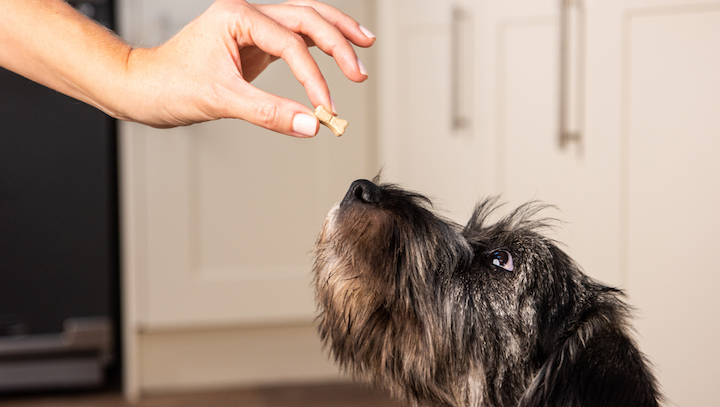Fleas, ticks, mites, and worms are just a few of the unpleasant passengers that our furry friends can harbour. Some of these bugs could seriously injure them. Fortunately, there is something you can do about it!
Given the vast array of flea and tick control medications for pets that are produced each year, it’s not surprising that Australian pet owners frequently feel a little perplexed. What drugs address which parasites? Is newer necessarily better? Which flea prophylaxis is safest, and more importantly, which is truly the most effective? To ensure that you get the best treatment, we’ve put up a useful reference to parasite products.
Types of Flea Tick and Worming Products for Dogs
Young or adult, all pooches need an effective flea tick treatment for dogs to stay healthy and protected. The main benefit of keeping your dog free of fleas and ticks is shielding them from the illnesses that these pests can spread!
Fleas and ticks can transmit a variety of contagious illnesses that can seriously make them sick and, in some cases, even kill them. Anaemia, which can be fatal to pups and kittens, is one of the diseases transmitted by both fleas and ticks. They also spread Lyme disease, especially deer ticks. Joint pain and fever are typical symptoms of Lyme disease, but if it is not treated promptly, renal failure may result.

Even if they don’t get sick, your pet will still feel uneasy and unhappy after being bitten by a flea or tick as the bites hurt and itch.
However, pet owners can benefit from the right flea tick treatment for dogs as well. Fleas and ticks in your house can result in a variety of issues, such as discovering them on your carpet, getting bitten, developing Lyme disease, or finding them on your skin (yes, fleas can bite owners too!). So, it’s very important to prevent it from happening.
Tablets
Dog tablets are the most popular type of oral treatment. They can be difficult for dogs to swallow at times, so it helps if they are flavoured or covered in something slick, such as a sugar coating or a digestible film. Worming tablets serve both as a preventive and a treatment, which means you can give them to your puppy regularly.
Same as with dog food, oral flea treatments are safe as long as you stick to the dosages advised for your pet’s size and age. In homes with young children or other pets, oral treatments are ideal because there is less risk of them accidentally coming into contact with flea medication. Be sure your pet has swallowed the tablet or chewed before letting them play and make sure they don’t bring it back up. The same goes for all oral medicines.

Flea Tick and Worms Chews
Chews function in the same way as tablets, they are only consumed differently and have a somewhat softer texture. Some dogs love the chew’s texture, and they may chew it in a manner that is similar to when they eat. Additionally, most chews have a meat flavour, so most dogs will eat them happily.
Spot-On Flea and Tick Treatment
The anti-tick and anti-flea medications frequently come in individual vial packaging. They are administered, and spotted, between the shoulder blades of your pet’s back. They are unable to self-groom in this area, making it impossible for them to take the medication orally. These medications can be used on breeding dogs and are excellent at quickly eliminating adult fleas before they deposit eggs.
Collars
Pet collars come in two varieties: repelling and treating. Repelling collars are effective for a long time and aid in thwarting any attempts by fleas and ticks to infest your pet. However, treatment collars are employed when a dog has an infestation and trying to get rid of them. Are flea collars toxic for dogs? Dogs are safe using them but perhaps humans should be more concerned.

Therefore, you need to be very careful with the treatment collars, as they come with a stronger chemical component. You may accidentally touch your mouth and nose right after petting your dog and cause an infection. Another important factor to consider when dog collars are in question is their position. The area surrounding the neck will be covered, but the treatment might not be as successful if your dog has fleas close to its rump.
All-in-One Treatment
Pets’ medical technology has advanced significantly. Currently, you can treat your pets for fleas, ticks, and a variety of worms in one straightforward medication. This eliminates the hassle of giving your puppy a collar or bath to get rid of fleas, a spot-on to get rid of ticks, and a different prescription to get rid of worms.
The type of medication will determine how frequently you should treat your puppy for fleas, ticks, and worms. For instance, chews are given once a month, although some chews for small breeds can last up to three months. You will only need to treat your dog once every three months for stomach worms. However, you must treat them every month for heartworm.
Look at the suggested dosage and treatment schedules on the box, and if you still have questions, consult a veterinarian for more guidance. To keep track you can write the dates of your dog’s treatments on your calendar.
Does Your Dog’s Size Matter?
All dogs, regardless of size, are capable of taking medication and require it for both prevention and treatment. Depending on your dog’s size, weight, and age, there are dose guidelines for each type of medication.
You should, however, speak with your veterinarian before giving your pets any drugs as you surely don’t want to give them the wrong dosage. They can advise you on the finest medications as well.